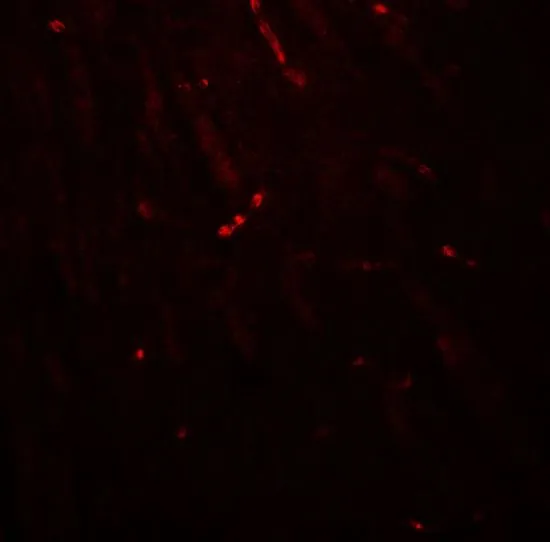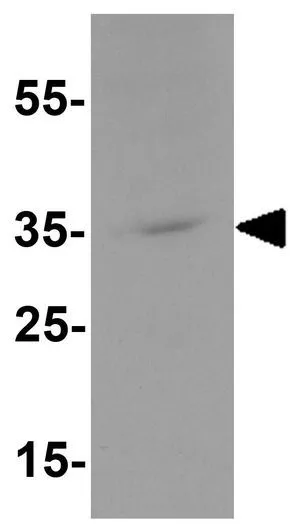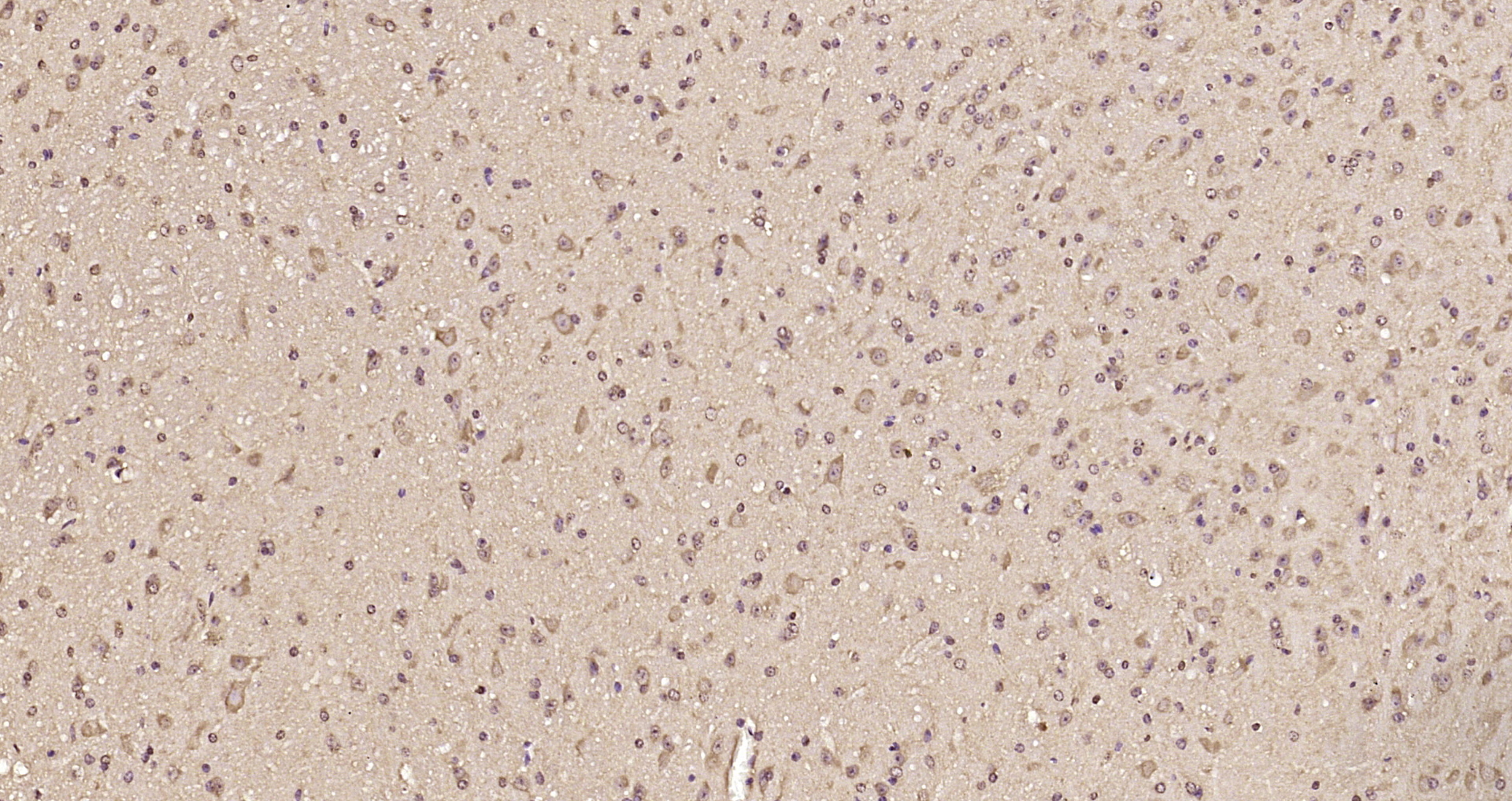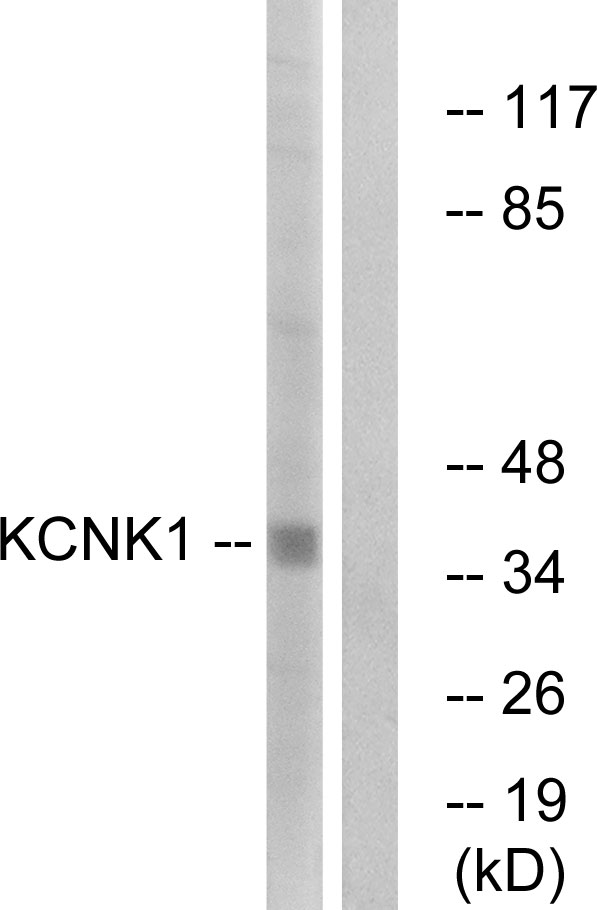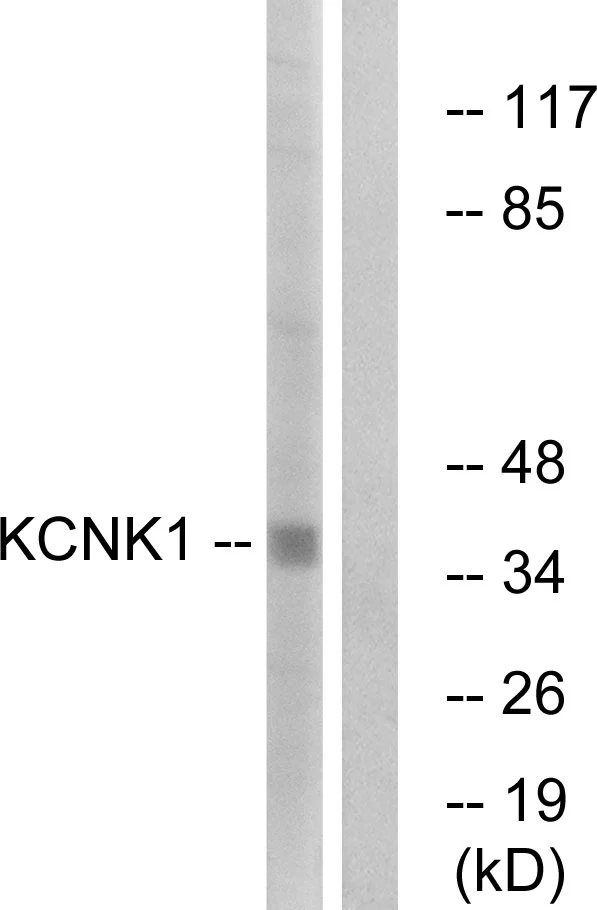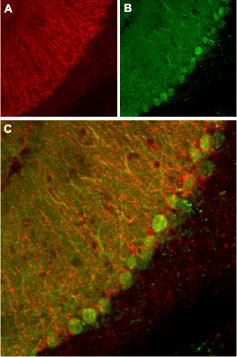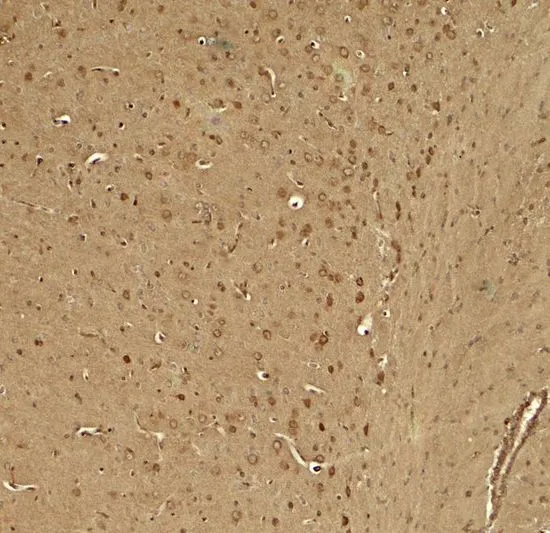
IHC-P analysis of mouse brain tissue using GTX31601 KCNK1 antibody. Working concentration : 5 microg/ml
KCNK1 antibody
GTX31601
ApplicationsWestern Blot, ELISA, ImmunoHistoChemistry, ImmunoHistoChemistry Paraffin
Product group Antibodies
TargetKCNK1
Overview
- SupplierGeneTex
- Product NameKCNK1 antibody
- Delivery Days Customer9
- Application Supplier NoteWB: 1 - 2 microg/mL. IHC-P: 5 microg/mL. *Optimal dilutions/concentrations should be determined by the researcher.Not tested in other applications.
- ApplicationsWestern Blot, ELISA, ImmunoHistoChemistry, ImmunoHistoChemistry Paraffin
- CertificationResearch Use Only
- ClonalityPolyclonal
- Concentration1 mg/ml
- ConjugateUnconjugated
- Gene ID3775
- Target nameKCNK1
- Target descriptionpotassium two pore domain channel subfamily K member 1
- Target synonymsDPK, HOHO, K2P1, K2p1.1, KCNO1, TWIK-1, TWIK1, potassium channel subfamily K member 1, inward rectifying potassium channel protein TWIK-1, potassium channel K2P1, potassium channel KCNO1, potassium channel, two pore domain subfamily K, member 1, potassium inwardly-rectifying channel, subfamily K, member 1, tandem of P domains in a weak inward rectifying K+ channel 1
- HostRabbit
- IsotypeIgG
- Protein IDO00180
- Protein NamePotassium channel subfamily K member 1
- Scientific DescriptionThis gene encodes one of the members of the superfamily of potassium channel proteins containing two pore-forming P domains. The product of this gene has not been shown to be a functional channel, however, it may require other non-pore-forming proteins for activity. [provided by RefSeq, Jul 2008]
- Storage Instruction-20°C or -80°C,2°C to 8°C
- UNSPSC12352203

